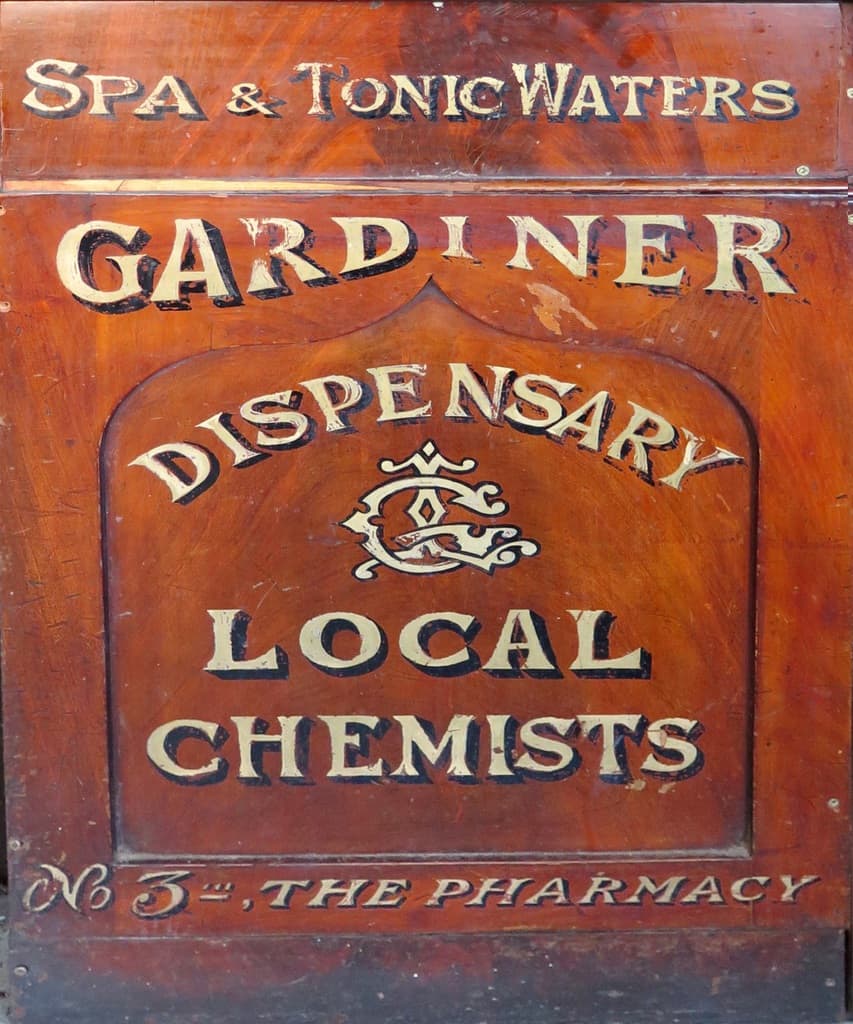26 Jan 2018
Gardiner & Lacey at the Cat & Mutton
The Cat & Mutton pub on Broadway Market in East London has a remarkable array of Victorian glasswork on display in the main bar (see samples below). However, on a recent visit for a family Christmas meal, my uncle and I discovered the above two panels fitted to the front of the upstairs bar. Being from Norwich, my uncle did some digging into the company, Gardiner & Lacey, resulting in the following notes and archival photos (from the wonderful collection of George Plunkett).
The firm was certainly there from the late 1800s, as Guildhall Pharmacy Gardiner & Lacey prescription books exist, dating from 1881 at 3 St Giles. Their premises were in a large Georgian building stretching between upper and lower Goat Lane. A few photos exist of the pharmacy, which was next to a pub on the corner.

[An aside: A closer look at the above photo reveals a piece of Youngs Crawshay & Youngs signage apparently propped up in the pub next door, as though it was originally located elsewhere/outside. However, a small image on this page shows a very similarly shaped sign propped up inside a window in the same way. I’d be interested to know if this was a widespread approach to the display of signage, as it doesn’t seem ideal having the window frames breaking up the lettering and decorative elements.]
In April 1942, the building was bombed. One witness said, “One bomb dropped in St. Giles opposite City Hall. One of the properties was Lacey and Gardiner’s chemist shop and I remember their stationery and prescription forms showering down on our roof.” The whole building was replaced after the war by the strange curved building where Paolo’s Restaurant is now. The pharmacy moved a few doors up St Giles to no.13, where Casaccio’s café was and where Soyokaze Japanese restaurant is now.
Whether the wooden panels came from the bombed out remains of No.3 or, possibly more likely, from the shop at No.13 when it closed in the 50s remains unclear. And how they made their way to the Cat and Mutton pub also remains a mystery. But other artifacts also made their way onto the market, as can be seen by this hanging carboy that was auctioned in Yorkshire in 2013. Curiously they claim that the lettering on the object says, ‘THE GUILDHALL PHARMACY NO 1 ST GILES STREET NORWICH’ in black & gold lettering. Whether this predates a move to No.3, or whether they took up residence in No.1 after the bombing and before they moved to No.13 is not known.
It seems likely that the panels made it into the architectural salvage market at some stage but, as Keith points out, they have traveled far in doing so. The value of authentic hand-crafted signage has been evident in recent reveals from Stoke Newington: Vacuum Shop and Starlove. There is a danger that by highlighting the presence of these signs, their value is increasingly recognised by their owners. We could then see their removal and sale as part of redevelopments, rather than being covered/left in situ as time capsules for future generations to enjoy. That said, they may then end up as interior decoration in far flung pubs, presenting opportunities for research and discovery as has happened here…
Thanks to Keith for the research. Here are some more photos from the panels’ new home at the Cat & Mutton, including this archival image of the pub itself taken from the Southern edge of London Fields.













